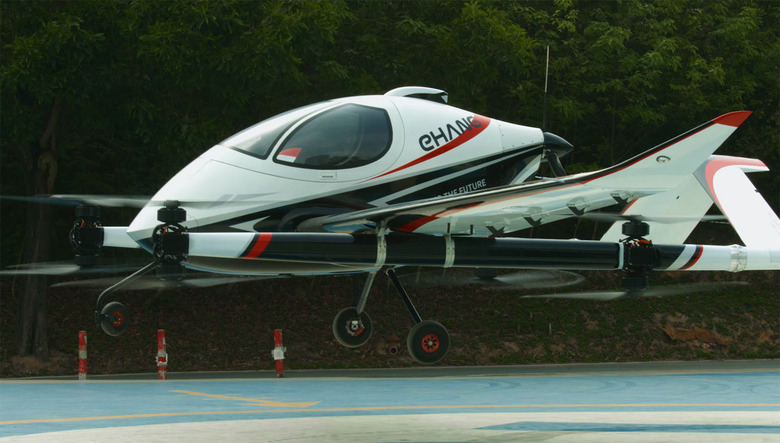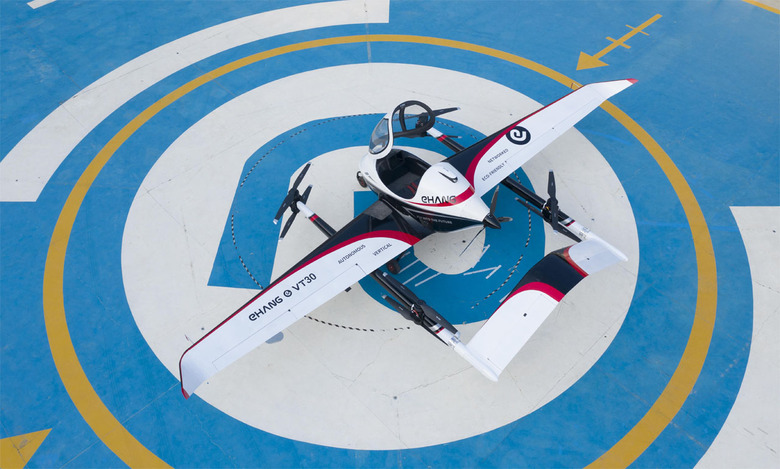EHang Long-Range VT-30 Autonomous Aerial Vehicle Takes Off And Lands Vertically
EHang has revealed the latest version of its aircraft that it calls an autonomous aerial vehicle or AAV. The aircraft is a long-range VT-30 meant to expand the company's regional air mobility coverage. VT-30 is designed specifically for inter-city transportation featuring a hybrid structure. The aircraft can travel a distance of up to 300 kilometers with a planned flight time of up to 100 minutes.
EHang says that it designed the aircraft to be a safe, convenient, efficient, eco-friendly, and intelligent air mobility solution for inter-city travel. VT-30 is meant to complement the company's EH216, focusing on intra-city air mobility and expand the air transportation and future urban air mobility ecosystem. The aircraft has a streamlined fuselage that combines a lifting rotor surface at the tail along with eight propellers on each side of the aircraft and a pair of fixed wings.
A propeller is in the rear of the aircraft in a pusher configuration. The aircraft supports vertical and taxi takeoff and landing modes depending on the needs at the particular landing site. The aircraft particularly focuses on longer distance and flight time. Safety features including triple redundancy fly-by-wire control system that can be altered into multiple modes to provide higher safety for the aircraft and passengers.

Two passengers can ride inside the VT-30, and the company promises the aircraft produces zero emissions and low noise. When landing aircraft in densely populated city areas, low noise is critical. EHang says that the VT-30 has conducted vertical takeoff and landing, power system, and other tests so far. In the future, additional tests and optimizations under different environmental conditions will take place.

EHang says the goal of its AAV is to be used in scenarios including air commuting, aerial sightseeing, and aerial logistics. It's unclear when the aircraft might be ready to begin commercial operations at this time.
